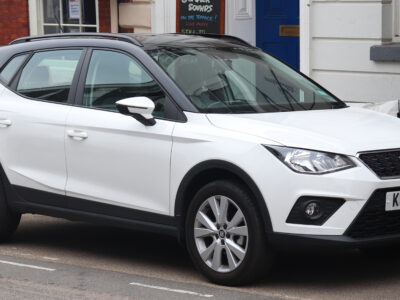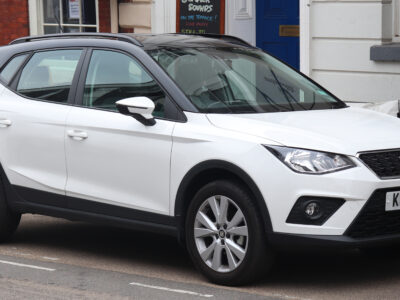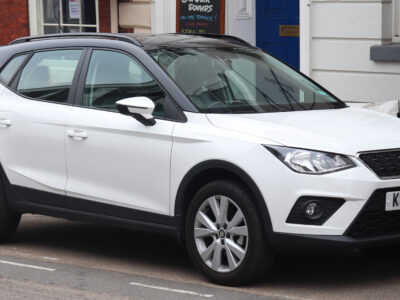
Peugeot 208 Dashboard Warning Lights and Symbols Explained (2012–2024)

Owning a Peugeot 208 is pure joy — until one of those mysterious dashboard lights flickers on. Understanding what these symbols mean can save you time, money, and serious mechanical trouble. In this complete guide, we decode every Peugeot 208 dashboard light from 2012 to 2024, including meanings, color codes, and recommended actions.
- Overview of Peugeot 208 Dashboard Symbols
- 1. Peugeot 208 Check Engine Light
- 2. Engine Oil Warning Light
- 3. Attention or General Warning Light
- 4. Battery Charge Warning Light
- 5. Airbag System Fault
- 6. Coolant Temperature Warning
- 7. Parking Sensors Indicator
- 8. Bulb Failure Warning
- 9. Headlight Indicators
- 10. Glow Plug Indicator (Diesel Models Only)
- 11. Handbrake and Brake System Warning
- 12. ABS System Fault
- 13. ECO Mode Indicator
- 14. Boot or Bonnet Open Warning
- 15. Front Radar and Adaptive Cruise Control
- 16. Lane Keeping Assist
- 17. ESP / ESC Engaged
- 18. Brake Fluid and Brake Pad Warnings
- 19. Steering Lock Symbol
- 20. Service Reminder Light
- 21. Cruise Control Indicator
- 22. Tyre Pressure Warning
- 23. Heated Seats Indicator
- 24. Heated Windscreen Icon
- 25. Air Suspension Fault
- 26. Windscreen Wipers Active
- Understanding Dashboard Light Colors
- Practical Steps When a Warning Light Appears
- Conclusion
- FAQs About Peugeot 208 Dashboard Warning Lights
Overview of Peugeot 208 Dashboard Symbols
Your Peugeot 208 uses a series of colored icons to communicate the vehicle’s status. Some lights are harmless indicators; others are urgent warnings. Here’s how to interpret them at a glance:
| Color | Meaning | Action Required |
|---|---|---|
| Green / Blue | Feature active (e.g., headlights, cruise control) | No immediate action |
| Yellow / Amber | Caution — check soon | Visit a garage soon |
| Red / Orange | Urgent warning | Stop driving immediately |
1. Peugeot 208 Check Engine Light
A glowing engine symbol means a potential issue in your car’s combustion system or emissions control. Common triggers include:
- Loose or damaged fuel cap
- Misfiring cylinder or poor fuel mix
- Blocked catalytic converter
- Faulty oxygen sensor
Action: If the light flashes or remains red, stop driving and contact a mechanic immediately.
2. Engine Oil Warning Light
This oil can symbol signals low oil level or oil pressure loss. Ignoring it could lead to catastrophic engine damage.
- Check oil level using the dipstick.
- Look for leaks under the car.
- Do not continue driving if the light stays on.
3. Attention or General Warning Light
Usually an exclamation mark, this light appears to draw attention to another dashboard message — often tied to the handbrake, battery, or system fault.
Tip: Always check the instrument cluster display for accompanying messages.
4. Battery Charge Warning Light
This battery icon means your car’s alternator or battery isn’t charging properly. Common causes:
- Old or weak battery
- Faulty alternator
- Loose or corroded battery terminals
Driving with this light on risks total electrical failure.
5. Airbag System Fault
An illuminated airbag icon may mean one or more airbags are malfunctioning — or simply a faulty sensor.
Action: Have it scanned by a qualified technician. Airbag faults can compromise safety in an accident.
6. Coolant Temperature Warning
A red thermometer symbol warns of overheating. Continuing to drive could warp your engine head gasket.
- Pull over safely.
- Check coolant level once the engine cools.
- Top up only with approved coolant.
7. Parking Sensors Indicator
When active, this symbol confirms your front or rear parking sensors are working. If it flashes or fails, the system may be obstructed by dirt or ice.
You may be interested in reading Peugeot 208 Engines: Full Guide to Petrol, Diesel, and Hybrid Powertrains
Peugeot 208 Engines: Full Guide to Petrol, Diesel, and Hybrid Powertrains8. Bulb Failure Warning
This light means one or more bulbs — headlight, brake, or tail — have blown or there’s a fuse issue. Replace bulbs promptly to maintain visibility and legality.
9. Headlight Indicators
- Low Beam: Normal driving mode.
- High Beam: Use only in dark or rural areas. Avoid dazzling oncoming traffic.
- Automatic Lights: Automatically adjust based on ambient light.
- Malfunction Light: Sensor fault detected — switch to manual lighting.
10. Glow Plug Indicator (Diesel Models Only)
For diesel variants, the coil symbol preheats cylinders before ignition.
- Green: Operating normally.
- Amber: Glow plug or sensor fault.
If the engine struggles to start in cold weather, suspect a faulty plug.
11. Handbrake and Brake System Warning
A red “P” or exclamation indicates the handbrake is engaged — or there’s low brake fluid.
If it stays on after releasing the handbrake, check brake fluid and pads immediately.
12. ABS System Fault
If your ABS (Anti-lock Braking System) warning appears, your brakes will still work — but the anti-lock feature won’t.
Visit a mechanic promptly to restore safe braking performance.
13. ECO Mode Indicator
When active, the ECO symbol confirms your 208 is optimizing fuel economy. Expect softer throttle response and limited performance — ideal for urban driving.
14. Boot or Bonnet Open Warning
A simple but easy-to-miss message: your boot or bonnet isn’t fully closed. Check latches and sensor alignment.
15. Front Radar and Adaptive Cruise Control
This radar-shaped icon shows the autonomous braking or adaptive cruise control system is active.
If it flashes, clean the radar sensor or visit a garage for calibration.
16. Lane Keeping Assist
A lane marker icon means your car’s lane-assist is operational. It keeps the car centered above 40 km/h.
If flashing, the system may be temporarily deactivated (e.g., unclear road markings).
17. ESP / ESC Engaged
When Electronic Stability Control (ESC) activates, it means the system is stabilizing your car — especially on wet or icy roads.
A persistent light could indicate a system malfunction.
18. Brake Fluid and Brake Pad Warnings
- Brake Fluid Low: Top up with DOT 4 brake fluid.
- Brake Pads Worn: Schedule a replacement — worn pads reduce stopping power and damage discs.
19. Steering Lock Symbol
A steering wheel with a lock icon means the steering column lock is active (anti-theft feature). If it stays lit after unlocking, seek assistance.
20. Service Reminder Light
A spanner or wrench icon means your Peugeot 208 is due for service — typically based on mileage or time since the last maintenance.
You may be interested in reading Peugeot 208 Engines: Full Guide to Petrol, Diesel, and Hybrid Powertrains
Peugeot 208 Engines: Full Guide to Petrol, Diesel, and Hybrid Powertrains Peugeot 208 Timing Belt Replacement Cost UK (2025 Guide)
Peugeot 208 Timing Belt Replacement Cost UK (2025 Guide)21. Cruise Control Indicator
Shows that cruise control is ready for activation. Typically, you’ll need to press an additional button to start the set speed.
22. Tyre Pressure Warning
This horseshoe-shaped icon means one or more tyres have low air pressure or the sensor has faulted. Check pressures and reset the TPMS system.
23. Heated Seats Indicator
Wavy vertical lines indicate seat heating is on. More lines mean higher heat levels.
24. Heated Windscreen Icon
A defrost symbol shows the windscreen heater is operating to clear fog or ice. It usually turns off automatically.
25. Air Suspension Fault
For top-trim Peugeot 208s with air suspension, this symbol indicates air leak, compressor issue, or sensor malfunction.
Drive carefully and avoid uneven surfaces until serviced.
26. Windscreen Wipers Active
This shows your automatic wipers are in motion. No action needed unless they fail to respond to rainfall.
Understanding Dashboard Light Colors
Green or Blue
Indicates a system is functioning correctly — headlights, indicators, cruise control, etc.
✅ No action required.
Yellow or Amber
Signals caution — something needs attention soon (e.g., tyre pressure, sensor faults).
⚠️ Inspect or schedule a check-up.
Red or Orange
Represents critical faults that demand immediate attention — oil pressure, brakes, coolant temperature, airbags.
⛔ Stop driving and call for assistance.
Practical Steps When a Warning Light Appears
- Stay Calm: Don’t panic — note the symbol color and shape.
- Check Owner’s Manual: It contains model-specific meanings.
- Inspect Key Fluids: Oil, coolant, and brake fluid are the top priorities.
- Restart the Car: Some temporary faults reset after cycling the ignition.
- Seek Professional Help: If the light persists or flashes red, consult your mechanic.
Conclusion
Your Peugeot 208’s dashboard is a messenger, not a mystery. Knowing what each light means empowers you to prevent expensive repairs and drive safely. While this guide simplifies diagnosis, nothing replaces a qualified technician’s inspection. When in doubt, stop, check, and call — it’s better than risking severe damage.
FAQs About Peugeot 208 Dashboard Warning Lights
1. Can I drive with the check engine light on?
Only if it’s steady and yellow — but have it inspected soon. A flashing or red light means stop immediately.
2. What does the red oil light mean on my Peugeot 208?
It indicates critical oil pressure loss. Stop the engine and check oil levels at once.
3. Why does my ESP light stay on?
This means your stability system is disabled due to a fault or was manually turned off.
 Peugeot 208 Engines: Full Guide to Petrol, Diesel, and Hybrid Powertrains
Peugeot 208 Engines: Full Guide to Petrol, Diesel, and Hybrid Powertrains Peugeot 208 Timing Belt Replacement Cost UK (2025 Guide)
Peugeot 208 Timing Belt Replacement Cost UK (2025 Guide) Peugeot 208 Tyre Size Guide: Complete Wheel, Pressure & Bolt Pattern Chart (2012–2025)
Peugeot 208 Tyre Size Guide: Complete Wheel, Pressure & Bolt Pattern Chart (2012–2025)4. How do I reset a Peugeot 208 service light?
Hold the trip reset button while turning the ignition on until the countdown reaches zero.
5. Is it safe to ignore the airbag light if the car runs fine?
No — the airbag system may not deploy in an accident. Have it checked immediately.
If you want to know other articles similar to Peugeot 208 Dashboard Warning Lights and Symbols Explained (2012–2024) you can visit the category Service and Parts.
Deja una respuesta






More content of your interest